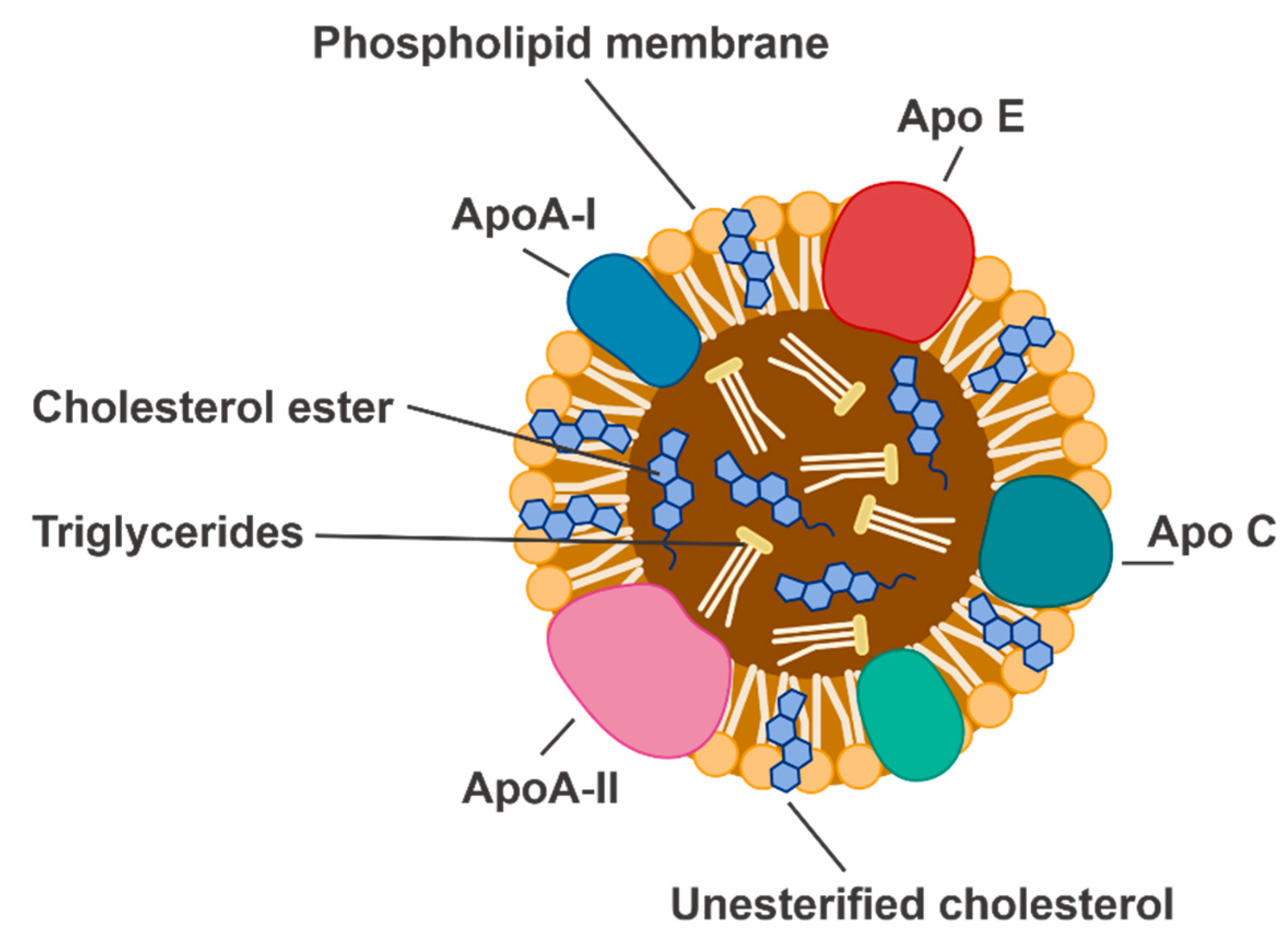Which of the Following Best Describes High Density Lipoproteins
Lipoproteins dissolve polar lipids for excretion. Lipoproteins are complex particles composed of multiple proteins which transport all fat molecules around the body within the water outside cellsThey are typically composed of 80100 proteins per particle organized by one two or three ApoAHDL particles enlarge while circulating in the blood.

Pdf High Density Lipoproteins Biology Epidemiology And Clinical Management
Which of the following best describes High-Density Lipoproteins HDLs.

. No answer is correct. Which of the following best describes fibrinogen. It is sometimes called the good cholesterol because it carries cholesterol from other parts of your body back to your liver.
Lipoproteins transport lipids in the body. Insulin promotes rapid uptake of the intact triglyceride molecules by adipocytes. Lipoproteins dissolve lipids in urine.
It functions by preventing the cholesterol from building up in the arteries. High-Density Lipoproteins HDL These particles play an important role in reverse cholesterol transport from peripheral tissues to the liver which is one potential mechanism by which HDL may be anti-atherogenic. Chemistry questions and answers.
LDL stands for low-density lipoproteins. Low-density lipoproteins LDLs are high and high-density lipoproteins HDLs are low. High-density lipoprotein HDL is one of the five major groups of lipoproteins.
Low density lipoprotein LDL Carries. Very Low Density Lipoproteins VLDL transport dietary. Discuss the implications of this asked Aug 30 2017 in Nutritional Science by BlaBlator.
A bad cholesterol because they take cholesterol to the liver. HDL The high-density lipoprotein it is also called good cholesterol and the density is due to high lipid and the protein ratio. The primary function of lipoprotein lipase is to.
Your liver then removes the cholesterol from your body. High density Lipoprotein HDL is formed by the removal of fat from LDL. Thus all these forms carry fats and cholesterol produced in the liver to the tissues.
HDLs are transport proteins that carry lipids from tissues to. HDL stands for high-density lipoproteins. They contain the most protein of any lipoprotein.
They have a high density. B bad cholesterol because excess HDLs are deposited in blood vessels. C good cholesterol because they take cholesterol to the liver.
Which of the following best describes omega-6 fatty acids. Lipoproteins dissolve polar lipids for excretion. Match each description to the appropriate lipoprotein category Low-density lipoproteinsLDL High-density lipoproteins HDL can invade artery walls and have levels that increase trigger inflammatory response are known as the bad cholesterol have levels that increase with with regular exercise help to remove cholesterol from arteries have levels that.
Sets found in the same folder. In addition HDL particles have anti-oxidant anti-inflammatory anti-thrombotic and anti-apoptotic properties which may also. Low-density lipoproteins LDLs are high and high-density lipoproteins HDLs are low.
-----They should comprise 5-10 percent of energy consumed. Low-density lipoproteins LDLs are high and high-density lipoproteins HDLs are low. E Lipoproteins metabolize lipids into new substances 3-12.
Which best describes the term energy balance. Which of the following statements best describes the purpose of a lipoprotein. Which of the following statements best describes the purpose of a lipoprotein.
DTriglycerides in the blood are broken down to monoglycerides fatty acids and glycerol prior to uptake by the adipose cells. Jen Christensen CNN 15 Nov. Which of the following is describes the painful sensation caused by lack of food that initiates food-seeking behaviors.
High-density lipoproteins or HDLs are known as. Which of the following lipoproteins has the highest percentage of lipids. The tiny air sacs of the lungs are called.
Help clear triglycerides from circulating lipoproteins in the blood. HDL stands for high-density lipoproteins. High levels of LDL are associated with an increased risk of CVDCHD also known as Bad cholesterol.
High-density lipoprotein triglyceride is hydrolyzed by adipose tissue lipase prior to fatty acid uptake. Made in the liver. Discuss the implications of this asked Aug 30 2017 in Nutritional Science by BlaBlator.
It is sometimes called the good cholesterol because it carries cholesterol from other parts of your body back to your liver. The optimal level of HDL cholesterol is 60 mgdL and higher. Lipid ratio and so is the densest.
Lipoproteins metabolize lipids into new substances. A Lipoproteins dissolve lipids in urine. --- High-density lipoproteins HDL 7.
B Lipoproteins dissolve polar lipids for excretion o Lipoproteins store lipids D Lipoproteins transport lipids in the body. Fibrinogen is a plasma protein involved in clotting. Convert nonessential fatty acids into essential fatty acids.
The 13078 patients in this study were being treated with statins and had a high cardiovascular risk high blood troglycerides and low levels of the good cholesterol known as high-density lipoprotein cholesterol. They are assembled in the epithelial cells of the small intestine. Transport lipids through the blood.
High density lipoprotein HDL Carries. 2020 The new study found that high levels of high-density lipoprotein commonly considered the good kind of cholesterol are 50. HDL high density lipoprotein this has the highest protein.
The only apoprotein associated with it is apoB-100. Discuss the implications of this asked Aug 30 2017 in Nutritional Science by BlaBlator. Which of the following is true of HDLs.
Deliver cholesterol around the body. Which type of carbohydrate includes starches and most types of dietary fiber.

Generalized Structure Of Spherical Hdl High Density Lipoproteins Download Scientific Diagram

Ijms Free Full Text The Role Of High Density Lipoproteins In Endothelial Cell Metabolism And Diabetes Impaired Angiogenesis Html

Functional High Density Lipoprotein Hdl Exhibits Pleiotropic Effects Download Scientific Diagram
No comments for "Which of the Following Best Describes High Density Lipoproteins"
Post a Comment